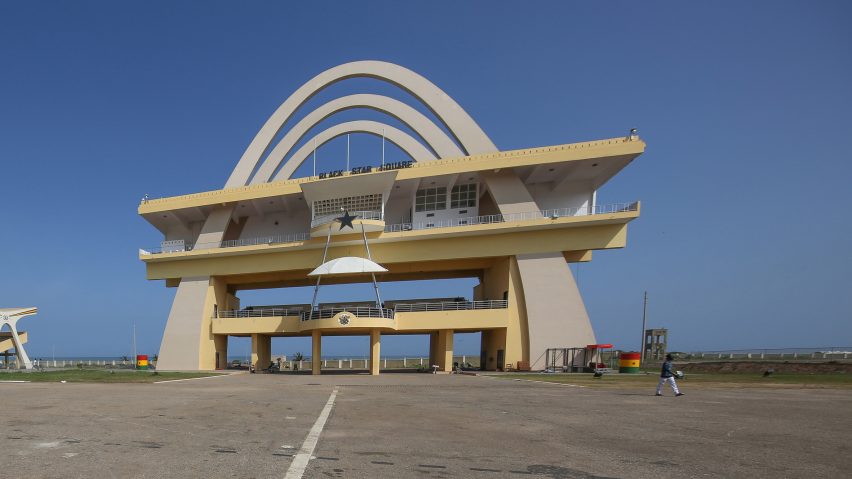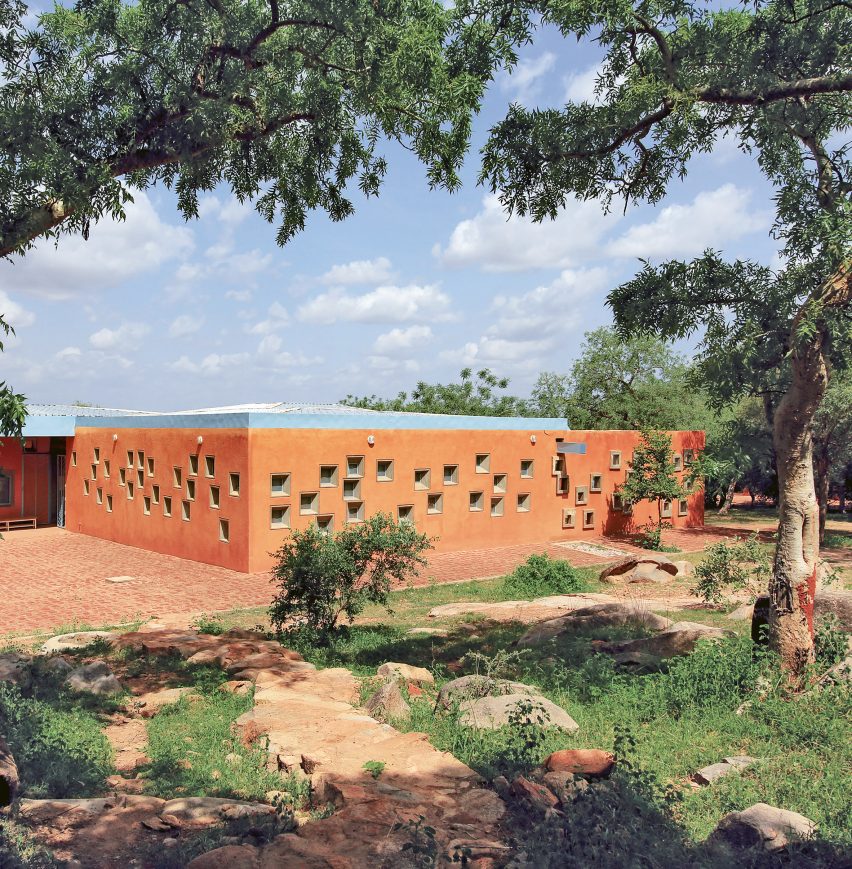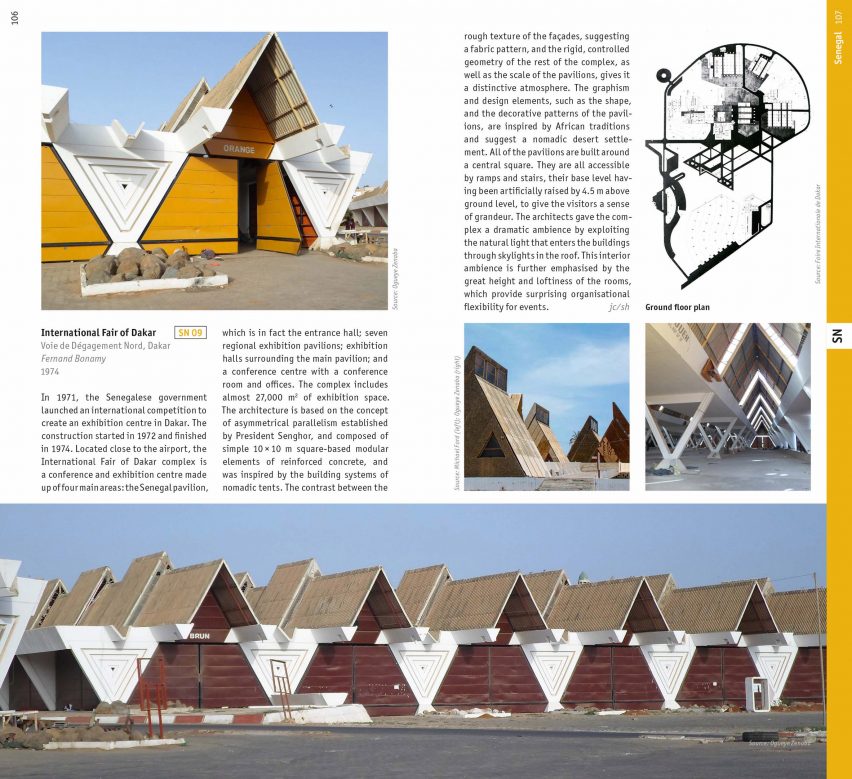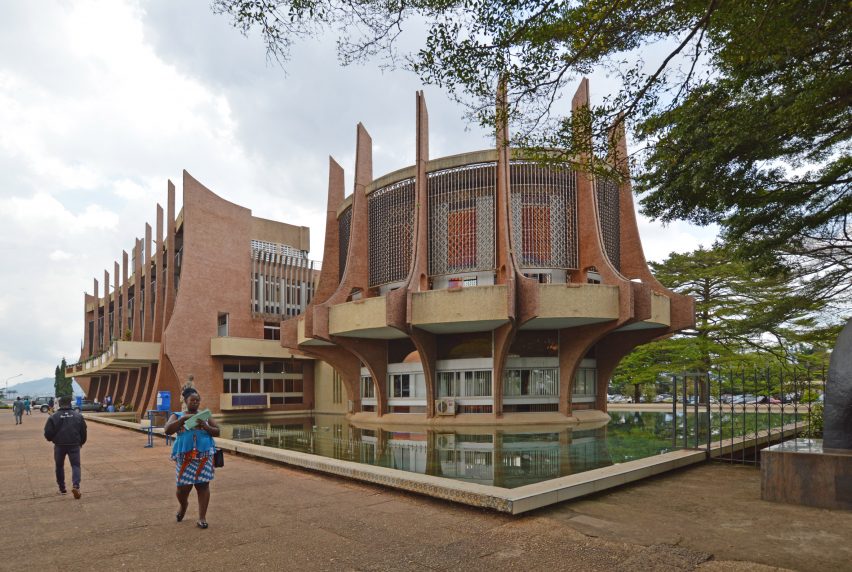
Guide to sub-Saharan architecture aims to "spread the word about Africa's architectural wealth"
Dom Publishers' ambitious Sub-Saharan Africa Architectural Guide covers the history and significant buildings of 49 countries in Africa. Its editors explain the aim of the multi-volume publication in the first of a seven-part collaboration focused on the architecture of the continent.
Edited by Philipp Meuser and Adil Dalbai, with contributions from nearly 350 authors, the Sub-Saharan Africa Architectural Guide aims to be a comprehensive guide to architecture in the southern part of the continent.
"For the very first time the architecture of every sub-Saharan country is presented individually in an individual chapter, some of which cover the respective country's contemporary architecture for the first time ever," explained Dalbai.

"Most importantly the project's polyphony makes it unique, with the multiple perspectives of nearly 350 authors it offers on a diverse continent," he told Dezeen.
"Therefore, it is not only a guide book in the traditional sense but much more, featuring impressive photographs and essays on various aspects of the continent’s building culture."
"It's a richly illustrated resource for both travellers and interested laypeople"
Meuser, who is also the owner of Dom Publishers, first decided he wanted to create a guide to sub-Saharan Africa in 2014 when he was working as an architect on a project in western Africa and found getting information about projects in the region difficult.
"While there are specialised publications on particular aspects of the region’s architecture, we felt there was a dearth of ambitious surveys of the region as a whole, which examine Africa's architecture for its own sake, rather than viewed as a manifestation of perpetual conflict or romantic transfiguration," Meuser told Dezeen.

What was planned as a one-volume book was finally released as a 3,400 page, seven-volume publication. The first volume focuses on the history and theory of African architecture and is followed by six volumes that each concentrate on a group of several countries.
For example, volume two is titled Western Africa from the Atlantic Ocean to the Sahel and focuses on the countries of Cabo Verde, Burkina Faso, Mauritania, Mali, The Gambia, Senegal and Niger.

"It's a richly illustrated resource for both travellers and interested laypeople as well as professional architects, academics, and anyone interested in the continent," said Dalbai.
"Although it is not surprising, how little is actually known about Africa's architecture outside of the continent is quite shocking," he continued.
"We are trying to share our own learning process with our readers, in order to spread the word about Africa's diversity and architectural wealth including the publication's theory volume about the theoretical foundations and big potential Africa has to offer to the global debate on the future of architecture."
Guide aims to "showcase the wealth of fascinating projects" and "everyday architecture"
The editors collaborated with a network of local experts to ensure that the guide covered the most important and interesting architecture in each country as well as interesting examples of local venacular.
"When writing an architecture book about a region that otherwise receives little attention, the challenge of guaranteeing a balanced selection is particularly great," Meuser told Dezeen.

"We as editors of course did extensive research beforehand, and then relied on local expertise in each of the 49 countries," added Dalbai.
"However, our aim was not only to showcase the wealth of fascinating projects in sub-Saharan countries but also to feature a cross-section through their everyday architecture, their built realities beyond stereotypes of either fancy, glossy resorts or the ubiquitous corrugated tin roof house," he continued.
Africa "very rich in different types of architecture"
Overall, Meuser hopes that the guide will add to serious discussions about architecture in Africa.
"Anyone who writes about Africa as a non-African ventures into sensitive territory, " he said. "As a European, one cannot deny colonial history, but one does not want to reduce the intellectual debate to that alone."
"I hope that I have learned to write about Africa in such a way that it is a contribution to a serious debate on architecture. And not just a politically correct statement," he continued. "Africa is not only very rich in different types of architecture. The continent is a great resource for a theoretical debate on the future of the city."
The second part of the series focuses on western Africa from the Atlantic Ocean to the Sahel and includes the International Fair of Dakar complex and a building that was destroyed by a volcano.
Photography is by Philipp Meuser unless stated.